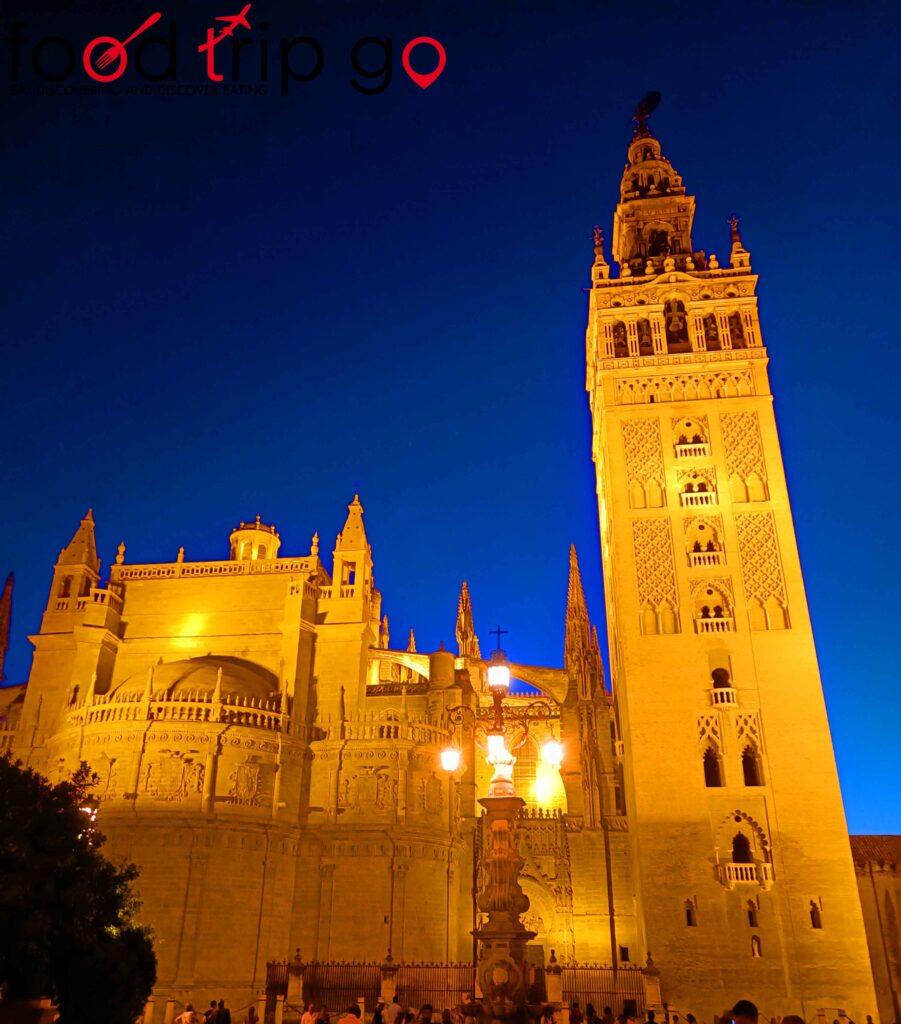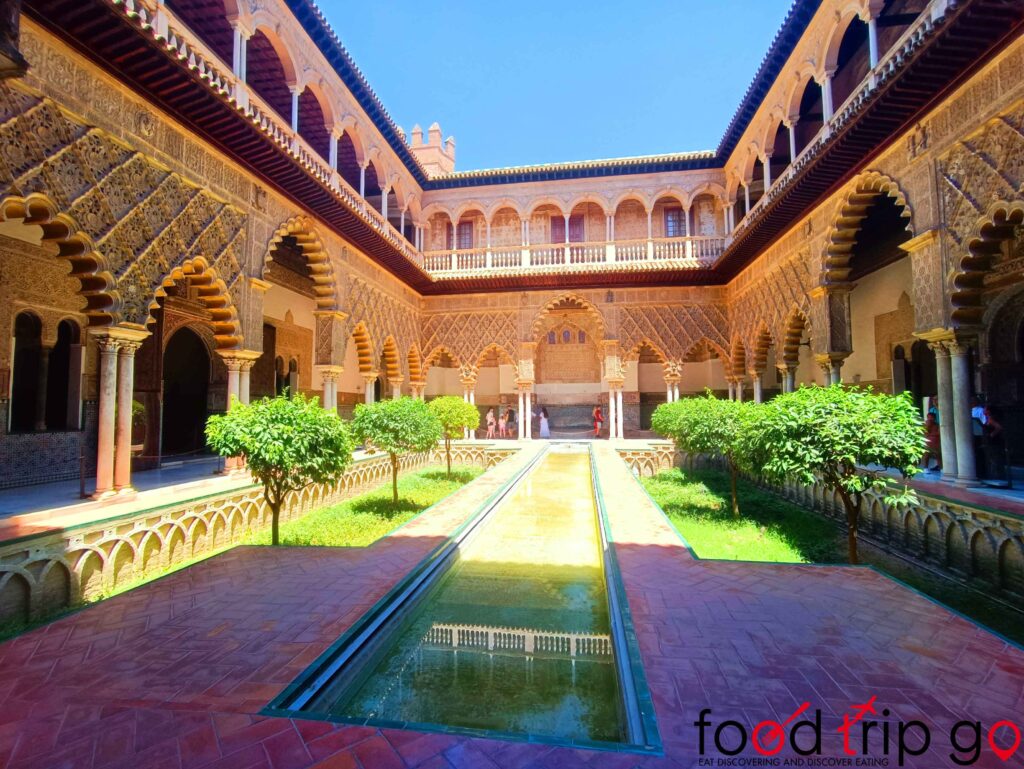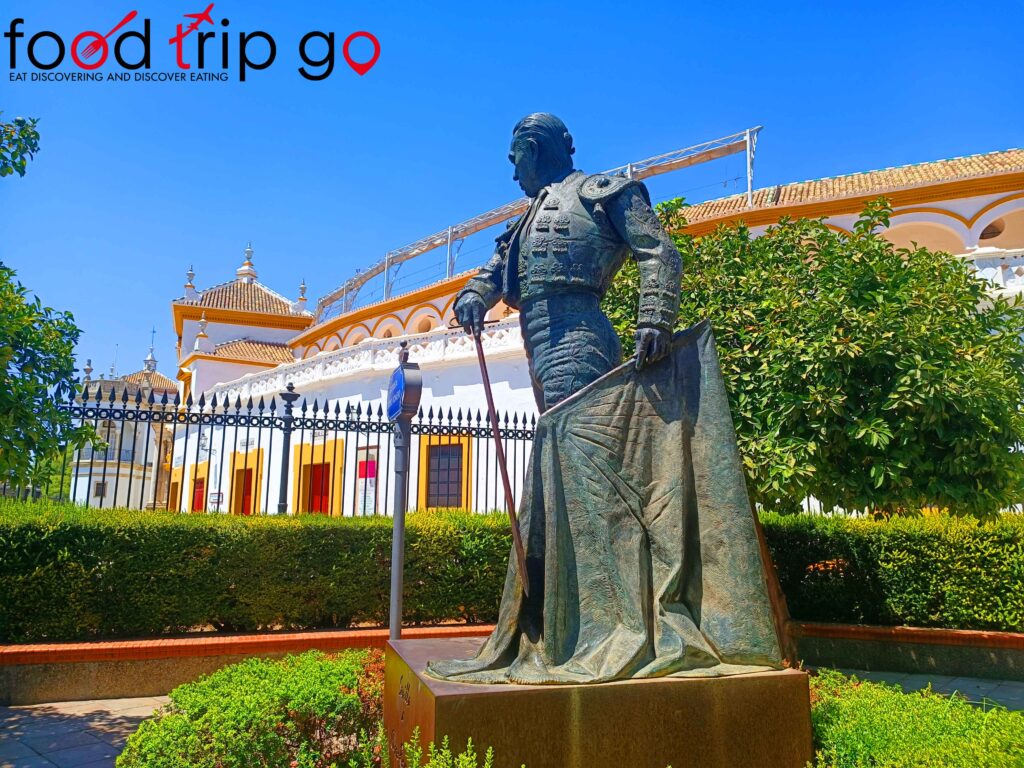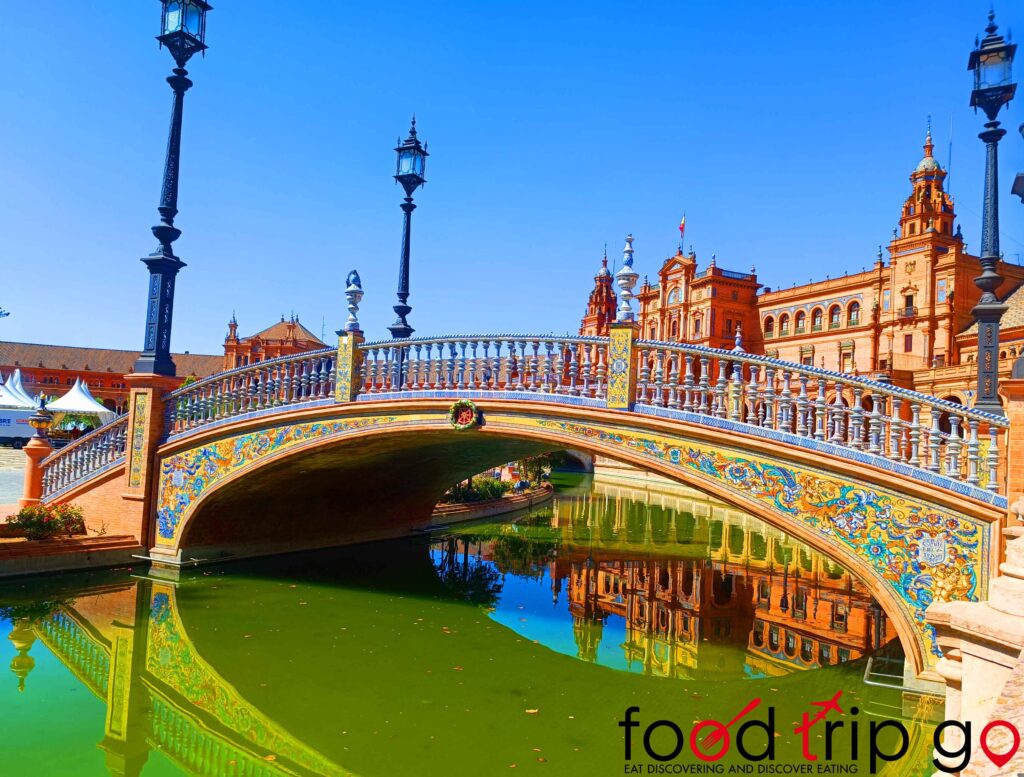The itinerary to discover the fascinating fusion of millennial history, breathtaking architecture and culinary traditions
Seville, the capital of Andalusia, enchants with its timeless charm, combining its ancient history, with the culture and architectural beauty that distinguishes it, thanks to the diverse influences of civilizations that have shaped it over the centuries. The city’s architecture is a mix of styles ranging from Roman, Islamic, Gothic, Renaissance to Baroque.
Seville is also a vibrant and lively city that comes alive at night with the music of the Spanish guitar and the sound of flamenco, the traditional Andalusian dance that enchants audiences with its passion and engaging rhythm. With its tapas, wine, bullfights, flamenco, and traditional festivals, Seville embodies Spanish passions.
The typical dishes of Seville
Tapas, without a doubt, are the undisputed stars of Sevillian gastronomy. These tasty appetizers are a true institution and allow you to sample a wide variety of flavors at one time.
The serranito is the most typical tapa in Seville. It is a sandwich with pork loin, a slice of ham and a fried bell pepper. Espinacas con garbanzos, or chickpeas with spinach, is another typical Seville dish, especially during Semana Santa, when precisely it would not be possible to eat meat. Another unfailing tapas is ensaladilla, or a kind of Russian salad.
A very popular tapa throughout Spain, but characteristic of Sevillian tradition, is tortilla de patatas, a potato omelet that is eaten cold . Croquetas are croquettes that are filled with béchamel and Los chicharrones are fried pork rinds, served hot or cold.
Among Sevillian dishes, one cannot ignore the famous rabò de toro, spread throughout Spain in several variations. Prepared with care and passion, this slow-cooked bull tail stew in a tasty sauce is a real treat for the palate and represents the excellence of local cuisine.
As for fish dishes, Seville cuisine offers pescadito frito(fried fish) and espetos de sardinas, skewers of grilled sardines. To conclude this culinary experience, one cannot overlook the sweetness of dulces de convento, produced by local monasteries. The typical dishes of this fascinating city represent the soul of Andalusia and offer an unforgettable culinary experience.
What to see in Seville
Setas de Sevilla, Barrio Santa Cruz, La Casa de Pilatos, Capilla de San Jose
The Setas de Sevilla, also known as “Le Metropol Parasol,” is an innovative architectural structure located in the heart of Seville and one of the centers of the City’s nightlife. Getting lost in the streets of the Santa Cruz neighborhood is another experience not to be missed. This maze of quaint little streets will make you feel like you’ve stepped back in time.
Seville’s Casa de Pilatos is a marvelous aristocratic mansion that enchants visitors with its architecture combining Renaissance and Mudejar styles and its splendid central courtyard. The Capilla de San Jose boasts magnificent Baroque decoration, with elaborate frescoes, gilded altars, and detailed sculptures.
Iglesia de la Magdalena, Plaza Nueva, Ayuntamiento
Seville’s Iglesia de la Magdalena stands out for its richly decorated interior. Seville’s Plaza Nueva is one of the city’s most charming and lively squares, and during the evenings it comes alive with street performers and musicians, creating a joyful and entertaining atmosphere. Here is the ayuntamiento de Sevilla, a magnificent example of neoclassical architecture, with its imposing facade and decorative details.
Catedral de Sevilla, Giralda
The Catedral de Sevilla is an imposing Gothic cathedral located in the center of Seville and is one of the largest cathedrals in the world. The cathedral also houses the mausoleum of Christopher Columbus and the Colombiana Library, a veritable treasure trove of bibliographic and documentary gems related to the discovery of America.
Part of Seville Cathedral is the famous Giralda, a Moorish belfry converted into a bell tower. Climbing to the top of the Giralda offers a spectacular panoramic view of the city. To be precise, the Giralda is the female-shaped wind marker that sits atop the bell tower, hence the name Giralda that has been given over time to the entire tower, a symbol of the City.

Plaza del Triunfo, Iglesia de Santa María la Blanca, Alcazar
With its impressive monuments, including the Cathedral, Giralda, and Real Alcázar, the Plaza del Triunfo enchants visitors with its architectural majesty. Iglesia de Santa María la Blanca features splendid coffered ceilings, horseshoe arches, and the highly distinctive ornamental details.
Seville’s Alcázar is a must-see stop on the itinerary because of its majesty and architectural and artistic beauty. This Moorish palatial complex is a true historical gem that offers an immersion in Seville’s rich history. Its magnificent gardens, with their maze of paths and enchanting fountains, create an atmosphere of tranquility and beauty.
The splendid courtyards, ornate halls and richly ornamented salons still show after centuries the talent and craftsmanship of the artisans who contributed to its construction. Different architectural styles blend here, combining Moorish, Gothic and Renaissance influences. The intricate details and works of art within its walls leave you speechless, transporting you to a distant and fascinating era.

Plaza de Toros de la Maestranza, Torre del Oro, Plaza de Espana, Parque de Maria Luisa
Seville’s Plaza de Toros de la Maestranza is one of the oldest and most prestigious bullfighting arenas in the world. Located on the banks of the Guadalquivir River, this majestic structure attracts bullfighting fans from all over the world. It is famous for its architecture with an outer ring of columns and arches. A visit to the Plaza de Toros de la Maestranza allows you to explore the bullfighting museum inside the bullring, where you can admire costumes, trophies, and other relics related to bullfighting culture.
Seville’s Torre del Oro is a tower of Moorish origin that dominates the city’s skyline on the banks of the Guadalquivir River. Inside the tower is the Museo Maritimo, which tells the naval history of Seville and its importance as a trading port during medieval times.
Seville’s Plaza de España is one of the most iconic and spectacular squares in Europe. It is surrounded by a navigable canal that runs through its perimeter, creating a fairy-tale atmosphere. Its arches, bridges and artistic details make this square an ideal place for a romantic stroll or for taking unforgettable photos. Inside the square are ceramic tiles representing the different provinces of Spain, creating a fascinating mosaic of colors and culture. This place embodies the essence of Spanish history and tradition.
The Plaza de España is surrounded by a park, María Luisa Park, which offers large green spaces and lovely gardens. It is a great place to relax, have a picnic, or simply enjoy the unique atmosphere of this extraordinary plaza.


Seville: a fascinating fusion of history, culture and flavor in the heart of Andalusia
Seville is a travel destination that enchants and captivates visitors with its thousands of years of history, vibrant culture, and architectural wonders. With a unique combination of Roman, Islamic, Gothic, Renaissance and Baroque influences, Seville’s architecture is a spectacle for the eyes, offering a journey through time through the centuries.
But Seville is not only history and architecture, it is also a lively city that comes alive at night with flamenco music and Spanish traditions. It is unique to be able to immerse oneself in the passion and energy of this traditional dance, savor delicious dishes such as tapas, and enjoy the local festivities that fill the streets with joy and merriment. Seville is a treasure that combines past and present, offering a unique combination of history, culture, architecture, traditions, and gastronomy.